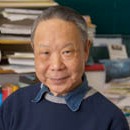Page 9 • (987 results in 0.06 seconds)
-
Bachelor of Arts or Bachelor of Science MajorFor either the Bachelor of Arts or Bachelor of Science degree, the student must take our introductory core sequence (BIOL 225 and 226) and a semester of genetics (BIOL 330). Completion of the two-course introductory core with grades of C- or higher is required before upper-division biology courses can be taken. Furthermore, BIOL 330 must be completed within five semesters of starting the introductory core series. To ensure breadth of study in biology
-
July 23, 2009 Biology professors win coveted Murdock grants Turning over barnacle-encrusted rocks, one by one, craning your neck to catch a glimpse of a bird or sloshing through a muddy tributary might not seem like hard core scientific endeavors. But think again. It’s research such as this that gleaned three assistant professors of biology – Michael Behrens, Julie Smith and Jacob Egge – grants totaling more than $120,000. The support, provided by the Vancouver, Wash. based M.J. Murdock
-
on the student term-based record as ST: followed by the specific title designated by the academic unit. (1 to 4) MATH 422 : Mathematical Modeling This course introduces students to mathematical modeling of various problems in biology, environmental science, and physics using curve fitting, difference and differential equations, simulations, discrete probabilistic models, and other methods. In addition to mathematical techniques, the formulation and analysis of models and the interpretation of
-
Program Learning OutcomesLearning Outcomes for BS and BA in Mathematics (BSM, BA) (Developed with reference to the MAA’s 2015 Curriculum Guide to Majors in the Mathematical Sciences.) Communication: Be able to read, interpret, write about, and talk about mathematics. Computation: Develop computational, algorithmic, and technological problem-solving fluency. Disciplinary Citizenship: Develop collaborative skills, independence, perseverance, and experience with open-ended inquiry. A. Abstraction
-

interdisciplinary studies and adds a permanent mathematical modeling course that challenges students to use mathematic tools to solve real-world problems. “It is really awesome to pair with other science majors to give more math background to support those concepts,” said N. Justice, assistant professor of mathematics. “Such double majors will be set apart and stronger in the job market.” Due to its interdisciplinary nature, the applied mathematics major pairs well with other natural sciences majors such as
-

January 14, 2011 New biology lab an interactive plus for students By Barbara Clements The lab tucked in the north side of the Rieke Science Center is all about drywall, dust and stacks of cabinets right now. But come spring semester, the new Louis and Lydia Sheffels Biology Laboratory, otherwise known as Room #136, will open up to new work stations and new equipment. Louis and Lydia Sheffels Biology Laboratory will open up to new work stations and new equipment. (Photo by John Froschauer) The
-

Washington, Seattle, 1958 Areas of Emphasis or Expertise Interatomic Interactions Atomic and Molecular Collisions Selected Publications Published Journal Articles K.T. Tang's Review Articles K.T. Tang's Curriculum Vitae Books Asymptotic Methods in Quantum Mechanics: Application to Atoms, Molecules and Nuclei (Springer 2000) : View Book Mathematical Methods for Engineers and Scientists 1 Complex Analysis, Determinants and Matrices (Springer 2006) : View Book Mathematical Methods for Engineers and
-
Course Title CSCI 115 Solve It With the Computer - QR CSCI 120 Computerized Information Systems - QR CSCI 144 Introduction to Computer Science - QR MATH 105 Mathematics of Personal Finance - QR MATH 107 Mathematical Explorations - QR MATH 115 College Algebra and Trigonometry - QR MATH 123 Modern Elementary Mathematics I: Number Sense and Algebraic Sense - QR MATH 124 Modern Elementary Mathematics II: Measurement, Geometric Sense, Statistics and Probability - QR MATH 128 Linear Models and
-

core concepts at an early age. He wrote a series of emoji based math books for kids from five to ten so they could enjoy a story of smiley faces adventuring while discovering properties of numbers and patterns that show up with geometry. These were deep mathematical concepts accessible to children. Bryan originally wrote them for his young grandchildren and then shared these books with some PLU faculty members and alumni with young children. Bryan served on many committees during his 35-plus years
-
Rieke Weekie - November 13th - 17thIt’s time for the fifth annual Rieke Weekie! Join us November 13-17th, as the College of Natural Sciences hosts special events in celebration of the disciplines represented in the Rieke Science Center (Biology, Chemistry, Earth Science, Environmental Studies, and Physics).Schedule of Events——————————— Monday, November 13th 10:30-11am, Rieke Lobby Get a sneak peek of the newly remodeled Rieke 103 rooms and play a trivia game about the subject of our spring
Do you have any feedback for us? If so, feel free to use our Feedback Form.


